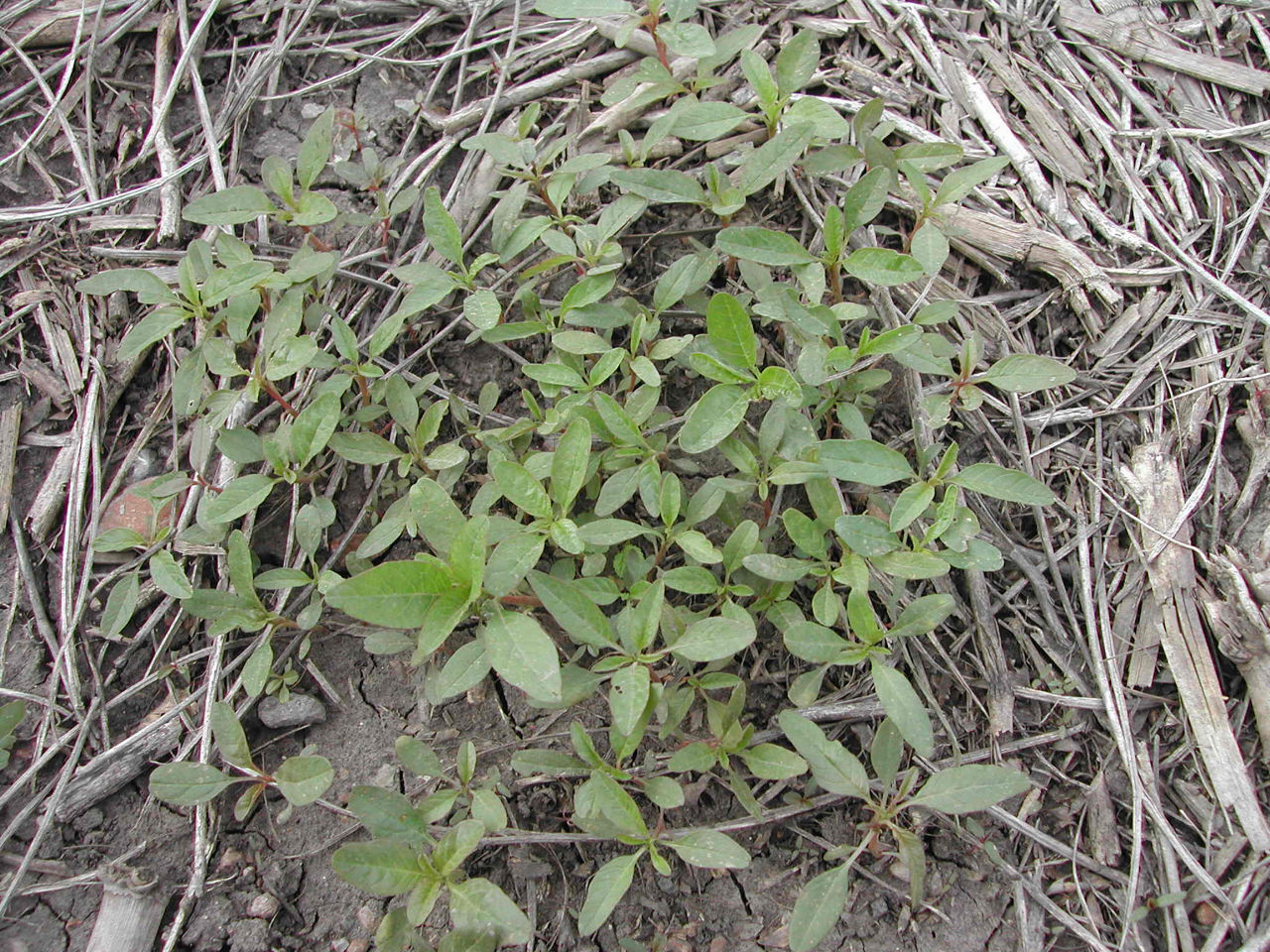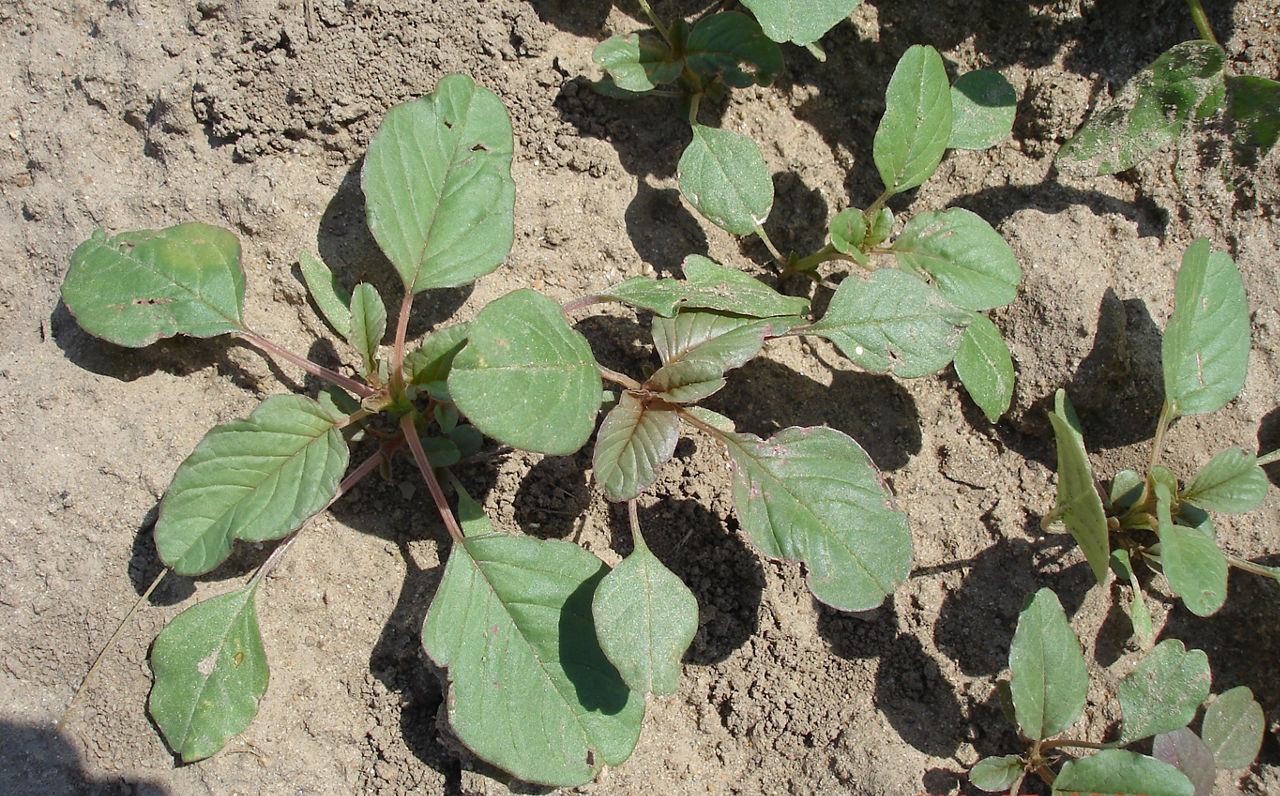5 MIN READ
Managing PPO-Resistant Weeds in Soybeans
July 2, 2024
Summary
- Protoporphyrinogen oxidase (PPO) inhibitor herbicides are widely used for postemergence and residual weed control for the management of glyphosate-resistant weeds in soybeans.
- Tall waterhemp, common ragweed, and Palmer amaranth have evolved as PPO-resistant weeds in many parts of the country.
- Best management practices are needed to manage resistant weeds and preserve the effectiveness of PPO herbicides for use in soybeans.
Protoporphyringogen oxidase (PPO) Inhibitors
PPO inhibitors are herbicides that belong to various chemical families and are classified as Group 14 site-of-action products (Table 1). The primary site-of-action of these herbicides is inhibition of the PPO enzyme which leads to the accumulation of peroxidative agents which leads to the breakdown of cell membranes. These herbicides are primarily effective against broadleaf weeds; however, some have preemergence activity on grasses. Because they have limited translocation within the plant, many PPO inhibitors are contact-type, postemergence herbicides. Visual symptoms generally begin with chlorotic (yellowing) of leaves that later become necrotic (browning) and desiccate within 1 to 3 days. Some PPO inhibitors can have residual soil activity that lasts up to 4 to 6 weeks. These herbicides applied alone or in tank mixes with other herbicides are widely used for weed control in soybeans. PPO herbicides are important in soybeans for the management of glyphosate-resistant weeds including Palmer amaranth and waterhemp.

PPO-Resistant Weeds
Resistance to PPO herbicides has been confirmed in thirteen weed species globally.1 In the United States, three weed species have been reported to be PPO-resistant. The first confirmed case of PPO- resistant Tall waterhemp (Amaranthus tuberculatus) was reported in Kansas in 2001 (Figure 1).1 Currently, tall waterhemp is considered the most widespread weed with resistance to PPO herbicides, occurring in Kansas, Nebraska, Missouri, Iowa, Illinois, Indiana, Minnesota, and Wisconsin. PPO-resistant common ragweed (Ambrosia artemisiifolia) was first reported in Delaware in 2005, and is now present in New Jersey, Maryland, North Carolina, Ohio, and Michigan (Figure 2).1 PPO-resistant Palmer amaranth (Amaranthus palmeri) was first reported in 2011 in Arkansas, and can now be found in Tennessee and Illinois (Figure 3).1 It is believed to be only a matter of time before PPO-resistant Palmer amaranth spreads throughout the South and Midwest. Resistance to PPO herbicides in weed species has been attributed to mutations in the PPO gene.2 The intensive use of PPO herbicides can potentially exert high selection pressure leading to the possible evolution of more resistant weed populations within a short period of time.



Best Management Practices
Best management practices for the control of PPO-resistant weeds involve the use of herbicides along with mechanical and cultural practices.
- Crop rotation. In a corn and soybean rotation, proactively manage broadleaf weeds with effective herbicide options available for corn to help reduce the seedbank in the soil for a following soybean crop where PPO-resistant weeds can be more difficult to manage.
- Tillage. Deep tillage can help on less erosive fields with a history of high weed densities.
- Cover crops. Dense cover crop systems can impede spring weed emergence.
- Narrow rows and increased seeding rates. Planting soybean in narrow or drilled rows and at higher seeding rates encourages quicker canopy closure which can help to suppress weed emergence.
- Start clean by using a burndown herbicide application or tillage. Using an effective residual herbicide in the burndown application helps to maintain a clean field prior to planting.
- Scout fields to determine herbicide burndown or tillage effectiveness. It is important to scout fields for weed seedlings where preemergence herbicides were applied at planting as the soil residual activity of an herbicide declines over time. Scouting also helps to recognize weeds which might be displaying resistance. A broadleaf weed is susceptible to an applied PPO herbicide if the top leaves burn and fall off. However, PPO-resistance is likely if the top leaves of have a mottled appearance and the targeted weed continues to grow.
- Spray early to kill weeds before they reach 4-inches in height. Smaller weeds are easier to control.
- Use overlapping residuals to maintain control of later germinating weeds. Overlapping residual herbicides are to controlling driver weeds in season and can help from a resistance management standpoint. Include postemergence herbicides when necessary to control emerged weeds.
- Use multiple effective sites of action in the tank. This can reduce selection pressure on an herbicide and help slow the spread of resistant weeds.
- Plant soybean products with XtendFlex® Technology. This allows the use of glufosinate as an additional mode of action for broad-spectrum weed control including PPO-resistant weeds.
- Hand weeding. Hand removal of weeds may be necessary to prevent resistant weeds from dropping seed and adding to the seedbank in the soil.
- Clean equipment. Minimize field-to-field weed seed movement by cleaning tillage and harvest equipment.
Using new herbicide trait packages, postemergence and preemergence herbicides, multiple sites-of-action, overlapping residual herbicide applications, and a diversified program that includes cultural practices will help in the management of PPO-resistant weeds and preserve the effectiveness of PPO herbicides for use in soybeans. Continue to monitor weed resistance issues in your fields and manage accordingly.
Sources
1 Heap, I. 2020. The International survey of herbicide resistant weeds. www.weedscience.org.
2 Salas, R., Burgos, N., Tranel, P., Singh, S., Glasgow, L., Scott, R., and Nichols, R. 2016. Resistance to PPO-inhibiting herbicide in Palmer amaranth from Arkansas. Pest Management Science. Wiley Online Library. www.wileyonlinelibrary.com.
Hopkins, M. 2017. Best management practices to control PPO-resistant weeds. CropLife. https://www.croplife.com.
Begemann, S. 2017. In the battle of resistant weeds, what’s the best plan of attack? Farm Journal Ag Web. https://www.agweb.com.
Werle, R. 2018. Waterhemp management in soybeans. University of Wisconsin Weed Science. http://www.wiscweeds.info.
1323_75066